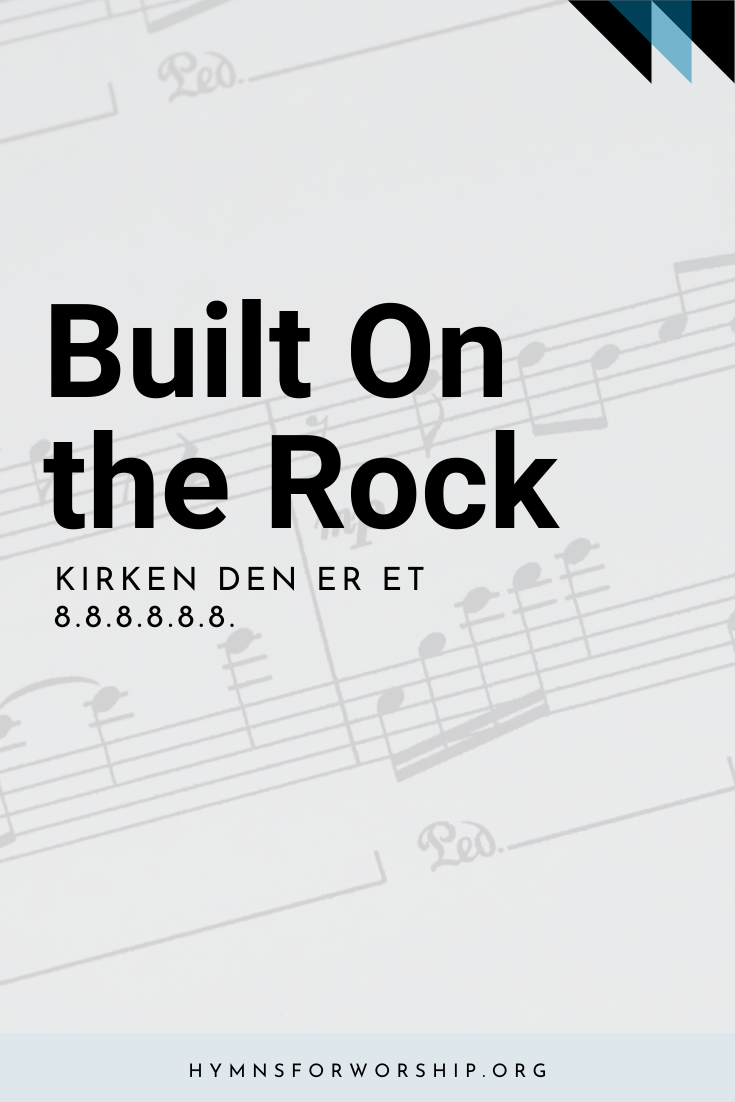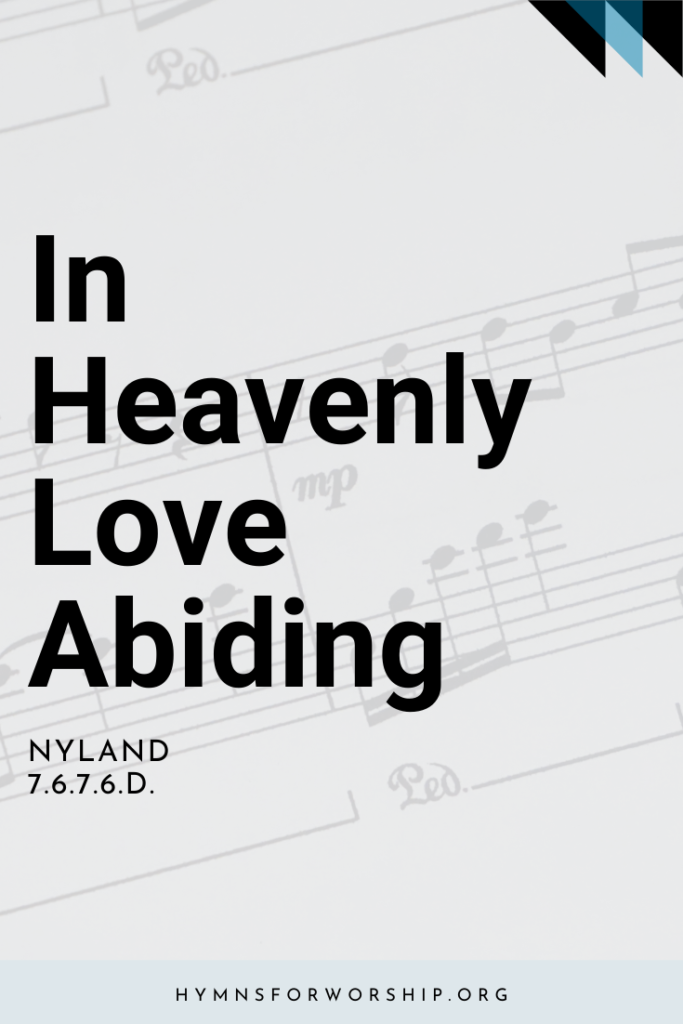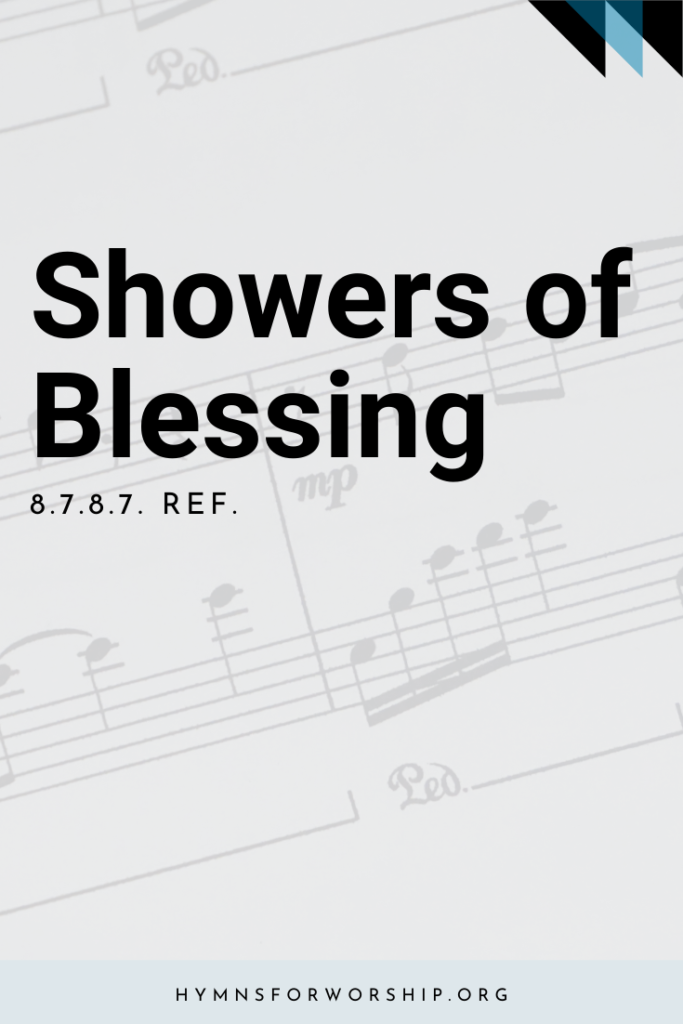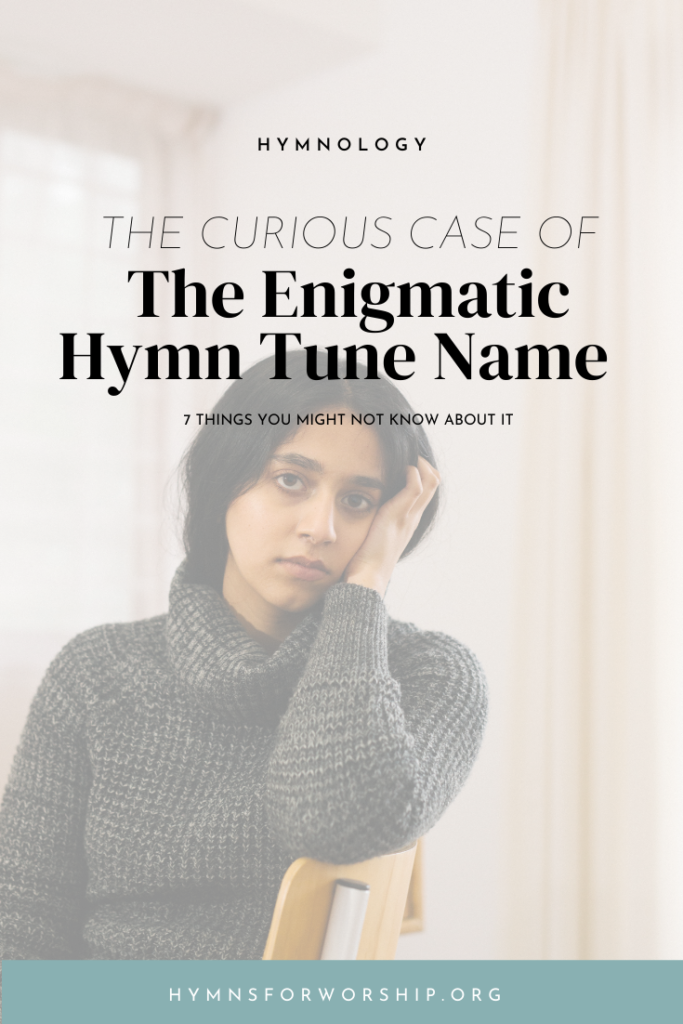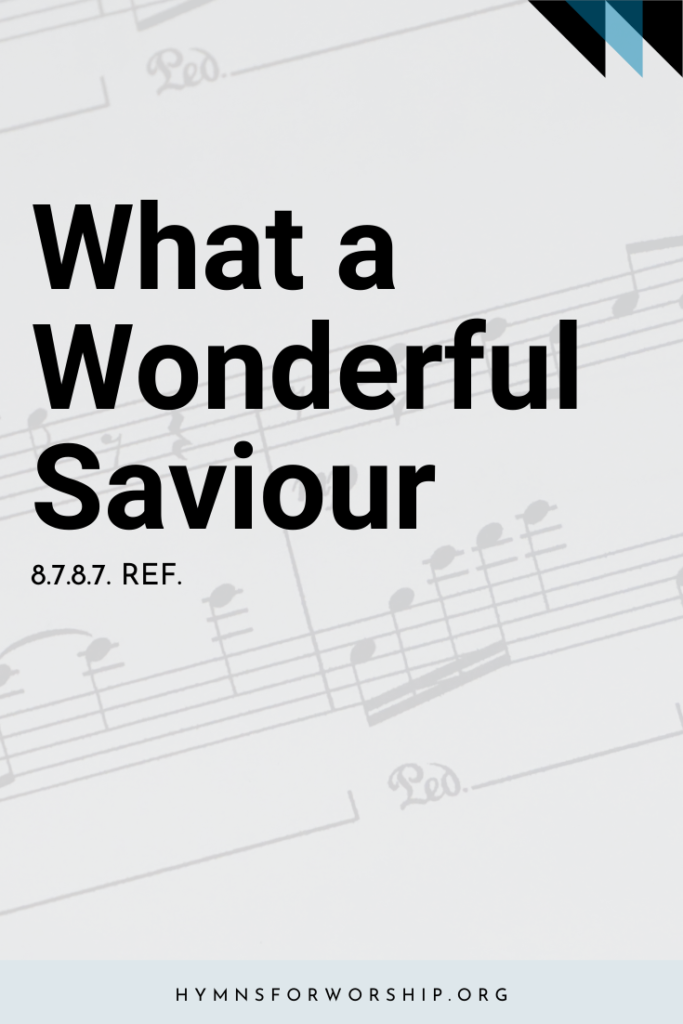CHRISTIAN CHURCH >> COMMUNITY IN CHRIST
SDAH 347
Built on the Rock the Church shall stand,
Even when steeples are falling;
Crumbled have spires in every land,
Bells still are chiming and calling
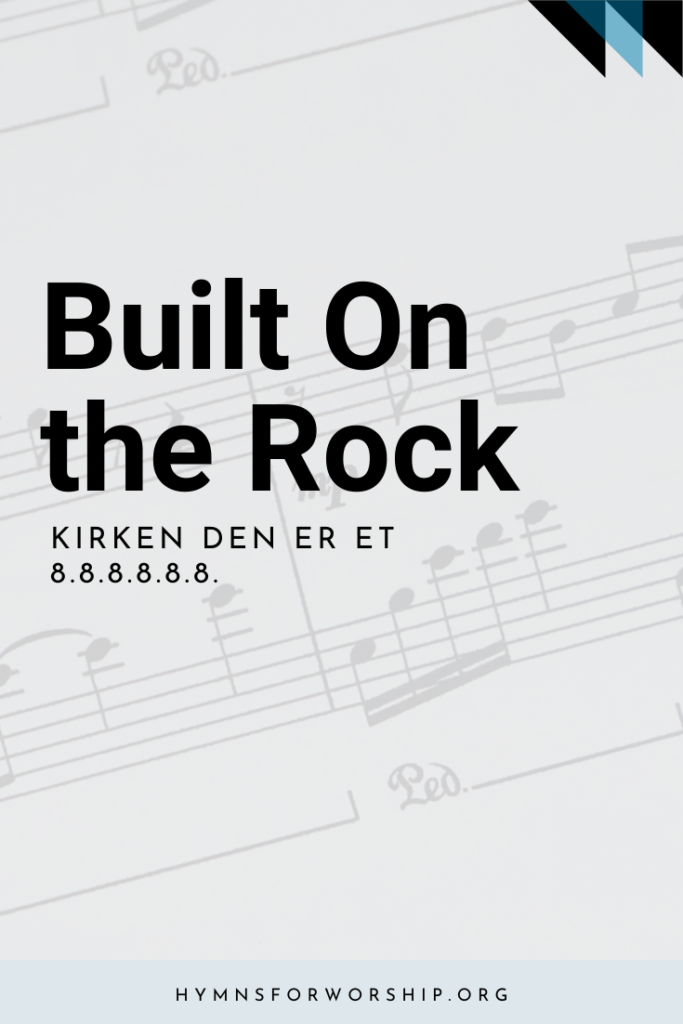

Text
1
Built on the Rock the Church shall stand,
Even when steeples are falling;
Crumbled have spires in every land,
Bells still are chiming and calling
Calling the young and old to rest,
Calling the souls of those distressed,
Longing for life everlasting.
2
Not in our temples made with hands
God, the Almighty, is dwelling;
High in the heav’ns His temple stands,
All earthly temples excelling.
Yet He who dwells in heav’n above
Deigns to abide with us in love,
Making our bodies His temple.
3
We are God’s house of living stones,
Built for His own habitation;
He fills our hearts, His humble thrones,
Granting us life and salvation.
Were two or three to seek His face,
He in their midst would show His grace,
Blessings upon them bestowing.
4
Yet in this house, an earthly frame,
Jesus His children is blessing;
Hither we come to praise His name,
Faith in our Savior confessing.
Jesus to us His Spirit sent,
Making with us His covenant,
Granting His children the kingdom.
5
Thro‘ all the passing years, O Lord,
Grant that, when church bells are ringing,
Many may come to hear God’s Word
Where He this promise is bringing:
I know My own, My own know Me:
You, not the world, My face shall see;
My peace I leave with you. Amen.

Hymn Info
Biblical Reference
(a) Matt 16:18 (b) Acts 7:48; 1 Kings 8:27; 1 Cor 3:16 (c) 1 Pet 2:5; Matt 18:20 (d) John 16:13 (e) Heb 13:8
Author
Nikolai F.S. Grundvig (1783-1872)
Translator
Carl Doving (1867-1937) adapt.
Copyright
Words copyright 1958 Service Book and Hymnal. Used by permission of Augsburg Publishing House.
Hymn Tune
KIRKEN DEN ER ET
Metrical Number
8.8.8.8.8.8.
Composer
Ludvig M. Lindeman (1812-1887)
Hymn Score
Piano Accompaniment
Notes
Get to know the hymns a little deeper with the SDA Hymnal Companion. Use our song leader’s notes to engage your congregation in singing with understanding. Even better, involve kids in learning this hymn with our homeschooling materials.
This Danish Lutheran hymn was written by Nikolai Grundvig and first appeared in Sang-vark iill den danske kirke (Song-work for the Danish Church), published in Copenhagen in 1837. Carl Doving made the English translation in 1909. For the Lutheran Service Book and Hymnal, 1959, Fred C. M. Hansen condensed the original seven stanzas to five and made some alterations. SDAH uses stanzas 1, 2, and 3.
Nikolai Frederick Severin Grundvig was born September 8, 1783, the son of a Lutheran pastor in Udby, Denmark. He graduated from the University of Copenhagen in 1803. For a time he was a teacher in a school for boys, and began to write poetry in earnest. When his father became ill, he was called to take the pulpit but because of his radical views regarding a theological controversy, it was 10 years before he was really accepted as a pastor. He became popular as a preacher and hymnwriter, and because of his efforts to raise the intellectual standard of the Danish people, he is known as the “father of the public school” in Scandinavia. On the occasion of his fiftieth anniversary as a pastor, many officials of the church and state from all the Scandinavian countries came to pay him tribute. He died September 2, 1872.
Carl Doving, born March 21, 1867, at Norddalen, Norway, immigrated to the United States at age 23 and trained for the Lutheran ministry at Trinity Seminary, Blair, Nebraska, he was ordained and served churches in Iowa, Wisconsin, and Illinois. He was president of the Iowa district, 1939-1943, and of the Illinois district, 1944-1948. A member of the committee for the Lutheran Service Book and Hymnal, 1958, he contributed a number of translations and original hymns. After retirement to his home at Blair, he died April 4, 1965.
KIRKEN DEN ER ET GAMMELT HUS means literally “Church it is an old house.” The strong minor tune was written by Lindeman for this poem in 1840 and printed that year in Wilhelm Wexel’s Christelige Psalmer. Ludvig, a musical prodigy as a child, studied with his father, who was a successful concert pianist in Trondheim, Norway. At age 12 he substituted on the organ in the church where his father played for 57 years. When he went to Oslo to study theology, he often played in Vor Frelsers Kirke, the church where his brother was organist. It was here that he served for 27 years with Pastor Wilhelm A. Wexels. They had a longstanding feud involving the pastor’s sermons, which were too long, and the organist’s improvisations, which tend to dominate the service!
With his son Peter, Lindeman founded the Oslo Conservatory in 1883, the first music conservatory of its kind in Norway. He published a large volume of organ music, a book of chorale melodies for hymns, and a volume of organ music, a book of chorale melodies for hymns, and a collection of some 2,500 folk melodies.

